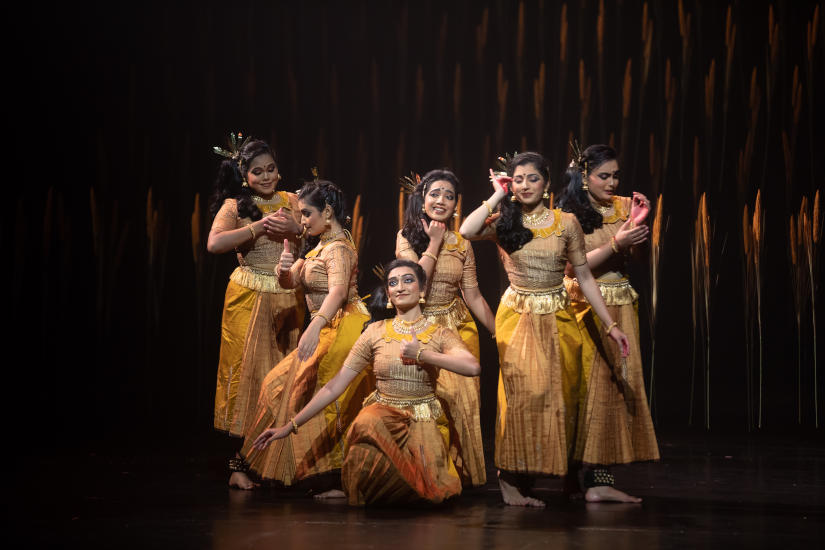ARISI : RICE
The Grains of Life

Synopsis
Communities across Asia are bound together by rice, described by many as the grain of life. Arisi: Rice is a cross-cultural and multidisciplinary production that pays homage to this reality. Taking the bold approach of eschewing traditional epic storytelling, Arisi is crafted as a series of vignettes about the rites and rituals honouring the various stages of life — birth, marriage, death — alongside the stages of rice cultivation. In each of these ceremonies marking the most significant moments in life, rice is the principal ingredient.
Arisi takes the audience through a kaleidoscope of dynamic images brought to life through bharatanatyam, with Apsaras Arts dancers sharing the stage with Balinese dancers from the GEOK Ensemble. And for the first time ever, the company collaborates with the Singapore Chinese Orchestra to create a truly unique score. A filmic layer of stories from Indian migrant workers who hail from a lineage of farming adds a powerful, first-person narrative to the dance production.
Creative team
Artistic Director: Aravinth Kumarasamy
Music Composer: Dr Rajkumar Bharathi
Music Director: Sai Shravanam
Choreographer: Prof I Wayan Dibia, Mohanapriyan Thavarajah
Costume Designer: Mohanapriyan Thavarajah
Reviews
Artistic collaborations can work wonderfully when East meets East. This is exactly what took place at the Esplanade, Singapore, when Apsara Arts, reached out to meld into an aesthetic whole with Balinese dancers, Singapore dramaturgy experts, lighting and set designers, and the Singapore Chinese orchestra. The connecting thread was the well researched theme: Rice, the daily life giver of the East, the core of a circle of tradition, ritual and celebration.Known as Arisi In the Tamil language, rice Is indispensable In the life of peoples of the east from birth to death and everything In between.
Vignettes where rice plays a significant role in life- events were enacted with dramatic lighting. The alphabets in Tamil which a child Is taught by writing on a heap of rice spread on the floor, was cleverly choreographed with the help of imaginative swara patterns ( musical notes). A young Devadasi child being taught her first dance steps ( Theyya Theyi) by stamping on a heap of husk ( Nellu) metamorphoses into the traditional Alarippu. Folk songs in Tamil, sung in their original plaintive melodies brought to life the dance depiction of death, birth, harvest, climate change, draught etc. The ethnicity of Balinese and Tamil culture ran in parallel depictions, danced with great Involvement by the dancers.
LAKSHMI VISWANATHAN, The Hindu









